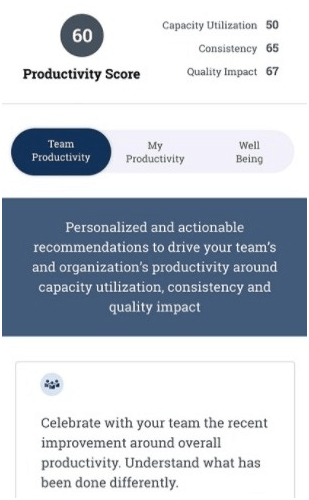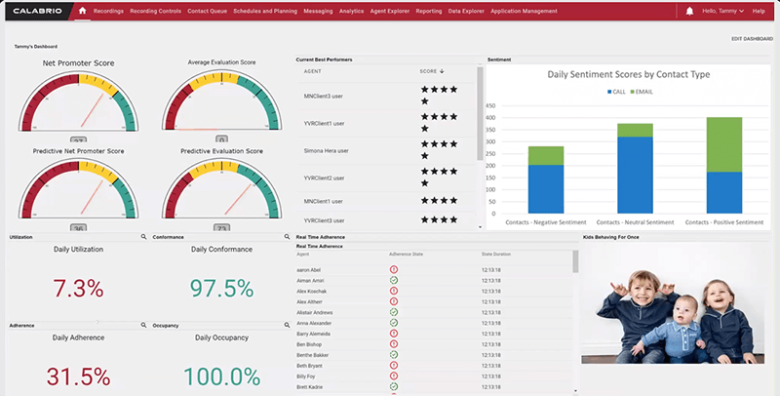Artificial intelligence is rapidly becoming a more common feature of the business landscape. Today, we’re using AI for everything from better analytics and reporting to improved interactions with the best virtual assistant. However, although there are various internal communications for artificial intelligence in the current landscape, one area that’s often overlooked is employee engagement.
All companies need excellent internal communication to support better teamwork, faster problem-solving, and great creativity. Hence, it makes sense to experiment with the latest tech for improving internal communications.
Artificial intelligence could be the best solution for businesses of all sizes that need to take their internal communications to the next level.
In this article, we will explore some ways that AI can assist with internal communications. But first, let’s briefly talk about what artificial intelligence is.
What is Artificial Intelligence?
Artificial Intelligence or AI, for short, is a branch of computer science that focuses on developing software capable of making intelligent decisions. These software solutions are based on complex algorithms, enabling the systems to replicate some processes that previously belonged to the realm of human intelligence only.
Some such capabilities are analyzing, problem-solving, planning, predicting upcoming issues or trends, language recognition, data extrapolation, and more.
Machine Learning or ML is taking AI one step further, as it “trains” the AI to learn from historical data and develop its own algorithms to improve performance. However, when it comes to AI used in systems that could improve internal communications, such AI still relies on data input from humans.
In the broadest of terms, AI frees up the workload that employees would have to spend on tedious tasks so they can focus on more delicate aspects of their work. For decision-makers and team leaders, it offers an opportunity to efficiently gather and analyze data to spot performance issues or measure the impact of their actions on the team and overall business.
How Can AI Help Improve Internal Communications?
AI can help improve internal communications in several different ways, from changing how employees connect in the workplace to measuring overall employee satisfaction and sentiment.
Here are four essential aspects to consider:
#1 Better Social Experiences
Over the years, companies have turned to everything from social media sites to internal networks to improve employee collaboration and communication.
Unfortunately, the use of social networks won’t always appeal to business leaders who believe that social platforms often get in the way of productivity, as studies have shown that the average employee spends 13 hours of work time on social media per week.
With an AI-powered platform, though, companies can access better social connections in a more professional environment. AI watching over conversations could automatically link users to relevant information that would give them more context on a discussion they’re having with a colleague.
AI could quickly match the employee to the content they need to do their work more efficiently and cut the noise that is often created in messaging boards and groups. This is especially relevant to large organizations that operate from different locations and through dispersed departments.
For example, instead of sending out a newsletter that in no way relates to the employee, cluttering their inbox, AI can determine which employees can benefit from the information shared.
AI platforms can also help team members find the right people they need to address a problem based on their specific skills, so people spend less time browsing through social connections to find the person responsible for a deliverable or decision.
All this ensures that the employee spends less time browsing through irrelevant information and has access to information faster. It also eliminates the risk of employee oversight regarding important updates.
Companies concerned about productivity can even use artificial intelligence to nudge employees who seem to be losing focus and encourage them to get back to work.
For instance, if an AI algorithm notices that a call center agent hasn’t taken a new call in the last 30 minutes, it could suggest a call or conversation that’s suitable for their skills.
#2 Clearer Return on Investment (ROI)
Sometimes, the biggest challenge for companies isn’t figuring out what kind of internal communications upgrades they should make. Instead, the complexity comes in figuring out what kind of return on investment each strategy can offer.
With artificial intelligence embedded into the internal communications strategy, it’s easy to collect information on everything from engagement levels to how happy an employee feels using a new communication service.
Artificial intelligence can collect data automatically. There are even systems that can identify the sentiment in an agent’s voice when they’re talking to a colleague over voice or video chat. This can immediately determine whether an employee is unhappy or not.
With AI tools, capturing trends and information that shows exactly how your investments are paying off is much easier.
Some forms of artificial intelligence with machine learning algorithms can even grow more intelligent over time. They might be able to give you more advanced insights, such as what times of day your employees are the most productive.
Additionally, as employees are one of the most important assets a business has, it can help determine skills that an employee excels at. This eliminates long and tedious recruiting, assessment, or promoting activities and rids the process of possible human bias or discrimination.
This means that data on employee performance can be tracked and analyzed over a longer period instead of relying on year-end surveys and questionnaires.
#3 Better Employee Engagement
A lot of internal communication in the business landscape suffers from exhausting and repetitive tasks that cause the engagement of your staff members to dwindle. For instance, during a meeting, your employees might have to take a lot of notes to help them at a later stage.
However, manual note-taking is an exhausting process that’s prone to human error. Focusing on the notes rather than the conversation also makes it harder for team members to get involved.
With artificial intelligence, you can set an automated system in place that records, transcribes, and shares information from meetings that customers can come back to later. You can even get those notes delivered to your other team members via email if they couldn’t attend the actual meeting.
You can also use artificial intelligence to automatically choose the best date for a follow-up conversation or meeting based on each attendee’s calendar details.
That means that employees can waste less time figuring out the best time to call a colleague back.
Implementing chatbots to perform some tasks like answering frequently asked questions are another way to streamline some tasks that bore your employees.
Employee disengagement is one of the leading causes of high employee turnover. When an employee feels like he is stuck in a rut, they will more likely look for more engaging and meaningful work elsewhere.
AI tools for performance and engagement monitoring can spot subtle changes in an employee faster than a busy leader or manager. This can improve internal communications by addressing any issues as soon as they appear instead of waiting for problems to escalate beyond repair.
#4 Better Support On-Demand
Finally, remember that we’re living in a world where people are used to getting everything they need almost instantly.
Your employees don’t want to have to wait around for answers to their questions if a tech professional isn’t available. They need to be able to see whom they can reach for assistance instantly and collaborate in real-time.
This is becoming even more evident with the rise of Industry 4.0. High connectedness across systems and fast data exchange, as well as smart analytics, make accessing essential information and support on-demand much easier.
With AI in internal comms, employees can troubleshoot an issue instantly without having to wait for a tech professional to jump in and help.
Your team members can see when their colleagues are going to be available instantly, which reduces the stress associated with setting up meetings and conferences.
Furthermore, Industry 4.0 technologies enable employees to always have access to current and accurate data without emailing back and forth or tugging other team members at their sleeves to share important datasets.
Gone are the days of silos, when one department had no idea about what the other department was up to—for example, it brings the marketing and sales teams together to create a more unified message across all customer touchpoints.
You can even find AI solutions that can pull up information about a contact instantly, so employees can jump into a meeting feeling fully prepared. All the while, the AI environment is simultaneously collecting information about how employees operate to improve the quality of their internal communications later.
Making the Most of AI for Internal Communications
Artificial Intelligence is growing more popular in all parts of the business landscape. In fact, the usage of AI for business has increased by 270% between 2015 and 2019.
It’s common for businesses to focus on the benefits of AI for external communications with customers rather than internal collaboration. AI can make a massive difference to the conversations that you have with clients, but it can also make the connections between team members more productive too.
With AI, business leaders can create more engaged employees who constantly have access to the information and support they need. This increases the quality of reporting and analytics strategies and ensures that you’re generating a positive ROI on every communications campaign.
AI for internal communications can even make internal social experiences better and strengthen the relationships between employees. Now could be the perfect time to discover what AI in comms can really do.
About the author:






